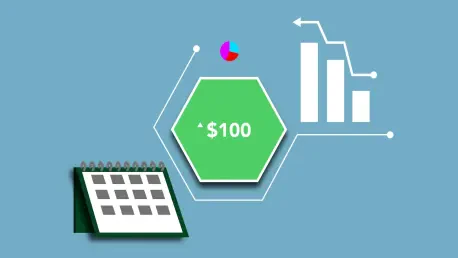The U.S. bull market, a symbol of prosperity for over a decade, stands on shaky ground as a fierce debate rages within the Federal Reserve over interest rates, creating a precarious situation for the economy. Picture a tightrope walker, balancing precariously above a chasm of economic uncertainty, where one misstep could send markets tumbling into chaos. With stock indices hovering near record highs, the Fed’s next move—whether to cut rates or hold steady—could determine if this historic run continues or crashes spectacularly. The implications stretch far beyond Wall Street, touching the lives of small business owners, investors, and everyday households. This critical juncture demands attention as the stakes for the economy have rarely been higher.
The importance of this story lies in its far-reaching impact on financial stability and growth. The Federal Reserve’s decisions shape borrowing costs, influence job creation, and dictate the pace of economic expansion or contraction. A wrong turn could exacerbate inflation or stifle recovery, disproportionately affecting vulnerable sectors like small businesses, which often lack the capital to weather downturns. Understanding the nuances of this debate is essential, as it reveals the fragile balance between fostering growth and preventing economic overheating. The outcome will likely define the market’s trajectory for years to come.
A Bull Market on the Brink: Can the Fed Steer It to Safety?
The current bull market, one of the longest in recent history, shows signs of exhaustion after years of relentless gains. Investors who once celebrated soaring stock prices now eye the horizon with unease, aware that the Federal Reserve holds the key to sustaining this momentum. The central question looms large: will the Fed’s policies act as a lifeline or a noose? This uncertainty has sparked heated discussions among policymakers, with potential consequences that could ripple through every corner of the economy.
At the heart of this tension is the Fed’s role as both protector and regulator of financial health. A miscalculation in interest rate policy might not trigger an immediate crash but could slowly erode confidence, draining liquidity from markets over time. Small business owners, particularly in underserved communities, stand to lose the most, as tighter credit conditions could halt expansion plans or force closures. The broader public, too, feels the weight of these decisions through mortgage rates and job opportunities, making the Fed’s next steps a matter of national concern.
Why the Fed’s Choices Could Make or Break Economic Stability
The Federal Reserve’s monetary policy serves as the backbone of the U.S. economy, dictating the cost of borrowing and the availability of credit. Its influence extends from corporate boardrooms to local startups, shaping decisions on hiring, investment, and expansion. Right now, the debate centers on a pivotal choice: lower interest rates to stimulate growth or maintain higher rates to curb inflation risks. The bull market’s fate hangs in this delicate balance, with each option carrying significant trade-offs.
For small businesses, especially among Hispanic entrepreneurs who launch ventures at higher rates yet face persistent barriers to financing, the Fed’s stance on rates is a lifeline or a roadblock. Data from the U.S. Small Business Administration highlights that access to affordable loans remains a top challenge for minority-owned firms, with many relying on personal savings to stay afloat. If rates remain elevated, borrowing costs could become prohibitive, stifling innovation and growth in communities that need it most.
Meanwhile, the investment landscape teeters on edge as stock and bond markets react to every Fed signal. Volatility has spiked in recent months, with the S&P 500 experiencing sharper fluctuations as uncertainty mounts. Investors, from institutional funds to individual retirees, are forced to reassess strategies, knowing that a prolonged high-rate environment could dampen corporate earnings and trigger sell-offs. The Fed’s decision-making process, once a behind-the-scenes affair, now commands public scrutiny as its impact becomes increasingly tangible.
Diving into the Rate Debate: Growth versus Inflation Concerns
The Fed’s interest rate dilemma has split experts into two opposing camps, each with compelling arguments and dire warnings for the bull market. Advocates for rate cuts, including prominent voices like Federal Reserve Governor Stephen Miran, argue for a significant reduction—Miran has proposed a 50 basis point cut—to ease lending restrictions. They contend that U.S. rates, higher than those in Japan or the European Union, unnecessarily burden businesses and consumers, pointing to sluggish small business loan approvals as evidence of the strain.
On the opposing side, Fed Chairman Jerome Powell champions a cautious approach, emphasizing the persistent threat of inflation. With gold prices having doubled over the past two years, signaling potential erosion of the dollar’s value, Powell warns that premature rate cuts could unleash price spirals that are hard to contain. His stance reflects a fear rooted in historical precedent, where unchecked monetary easing led to economic imbalances that took years to correct. This clash of perspectives underscores the complexity of steering the economy through turbulent waters.
Beyond the rate question lies a deeper issue: the true nature of inflation itself. Some argue it stems from external shocks like tariffs or supply chain disruptions, factors the Fed cannot directly control. Others point to monetary inflation, driven by excessive money creation, as the real culprit. Historical examples, such as high rates in the 1970s failing to tame price surges, cast doubt on whether interest rate hikes are the right tool. This ongoing disagreement adds another layer of uncertainty to an already fraught debate, leaving markets and policymakers grappling for clarity.
Expert Insights and Historical Lessons on Fed Policy
Voices of authority within and outside the Federal Reserve offer starkly contrasting views on how to navigate the current crisis. Jerome Powell has repeatedly stressed prudence, noting in a recent address that “inflation risks remain elevated, and acting too hastily could destabilize the broader economy.” His words carry the weight of responsibility, reflecting a commitment to avoid repeating past mistakes that fueled runaway price increases. Powell’s caution signals a preference for stability over quick fixes, even if it means slower growth in the short term.
In sharp contrast, Stephen Miran has publicly criticized delays in rate reductions, arguing that “holding rates high punishes the engines of growth, especially small businesses that need capital now.” His perspective resonates with many entrepreneurs who feel squeezed by tight credit conditions. Miran’s push for immediate action highlights a growing frustration with policies that seem disconnected from the realities faced by Main Street, urging a shift toward more supportive measures.
History provides critical context to this debate, revealing the pitfalls of misguided monetary policy. In the early 2000s, a weak dollar policy contributed to the conditions that precipitated the 2007-09 financial crisis, a painful reminder of how interconnected currency value and market health are. Moreover, pre-2008 Fed strategies often focused on adjusting bank reserves rather than relying solely on rate changes, a method some economists argue was less prone to distorting markets. These lessons challenge the current framework, suggesting that alternative approaches might better safeguard the bull market against impending risks.
Strategies to Shield the Bull Market from Collapse
With the bull market facing unprecedented threats, actionable steps could help mitigate disaster and preserve economic momentum. A balanced interest rate policy stands out as a priority—modest cuts could alleviate pressure on borrowers without ignoring inflation concerns. Such a move would provide small businesses with much-needed breathing room to invest and grow, while still maintaining a check on excessive price growth. The Fed must weigh these competing needs carefully to avoid tipping the scales too far in either direction.
Stabilizing the dollar emerges as another crucial focus, arguably more effective than rate adjustments alone in preventing monetary inflation. Historical data supports this view, showing that a strong currency often correlates with lower inflationary pressures, as seen in periods of disciplined fiscal policy. By prioritizing currency stability, policymakers can address root causes of economic distortion, rather than merely treating symptoms through short-term rate tweaks. This approach requires coordination beyond the Fed, involving broader fiscal strategies to reinforce confidence in the dollar.
For investors and policymakers alike, complementary measures offer additional layers of protection. Continued tax cuts and deregulation could sustain economic vitality, boosting market sentiment and encouraging investment. Meanwhile, individuals can safeguard their portfolios by diversifying assets and staying attuned to Fed communications for early signs of policy shifts. These combined efforts, grounded in the realities of the current debate, chart a path toward preserving prosperity and steering clear of a devastating downturn.
Reflecting on the intense discussions that unfolded, it became evident that the Federal Reserve faced a monumental challenge in balancing growth with stability. The divisions between rate cut advocates and inflation hawks exposed deep uncertainties in economic strategy, leaving markets on edge. Yet, amidst the contention, a consensus began to form around the need for adaptability—whether through measured rate adjustments or a renewed focus on currency strength. Looking ahead, the path to safeguarding the bull market demands innovative thinking and a willingness to revisit old assumptions. Policymakers and investors alike need to prioritize long-term resilience, exploring hybrid policies that can address both immediate pressures and underlying vulnerabilities. Only through such deliberate action can the economy hope to navigate the turbulent waters that lie ahead.









